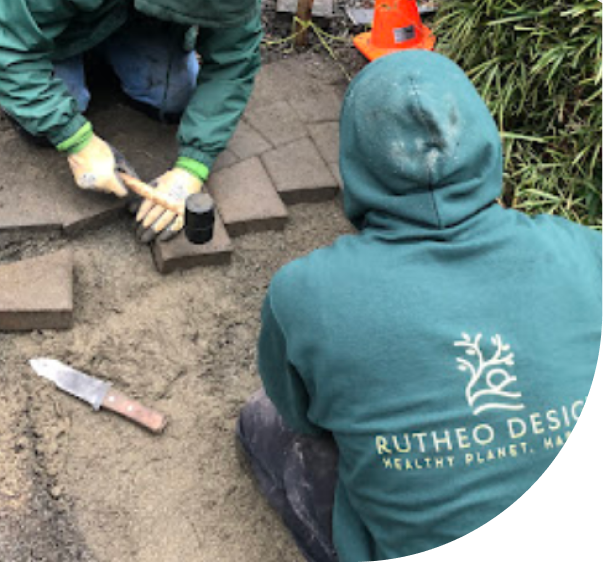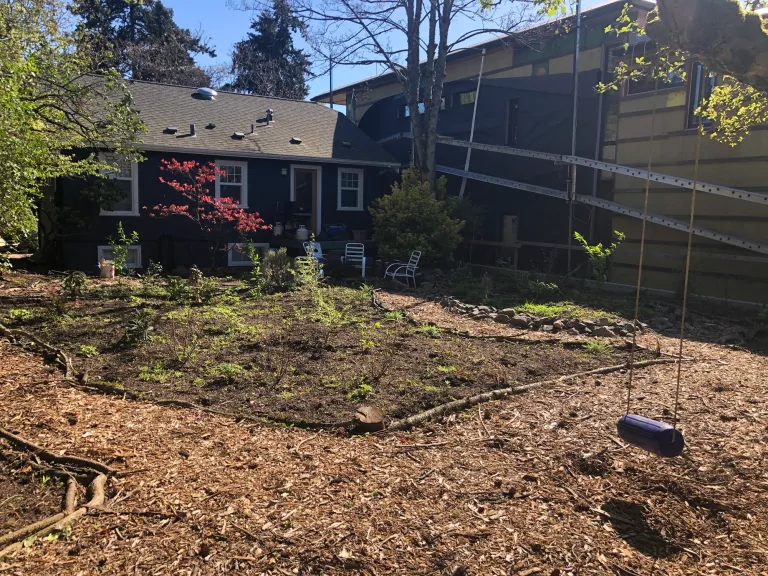
Native plant landscape design is a cornerstone of sustainable landscaping, particularly in ecologically diverse regions like Seattle. Native plants are species that have evolved over thousands of years within a specific region, adapting to the local climate, soil conditions, and ecosystem dynamics. This natural adaptation makes them highly resilient, requiring fewer resources to thrive compared to non-native species. At Rutheo Designs, we integrate native plants not only for their environmental benefits but also for their ability to create landscapes that are both beautiful and ecologically functional.
Native plants contribute to ecosystem resilience by maintaining the natural processes that sustain life. Their presence stabilizes ecosystems, allowing them to recover more quickly from disturbances such as storms, droughts, or human activity. Diverse plant communities enhance this resilience, as different species respond differently to stress, ensuring that the ecosystem as a whole can adapt and persist.
Incorporating native plants into landscape design restores critical habitats that have been lost to urban development. Trees like the Western red cedar and shrubs such as red-flowering currant provide food sources and nesting sites for birds and small mammals. Groundcovers like kinnikinnick offer shelter for insects and reptiles, supporting a rich web of life within even small garden spaces.
Native plants help restore ecological functions that have been disrupted by development and invasive species. They improve air and water quality, regulate local microclimates, and support healthy soil ecosystems. By reestablishing native plant communities, we can reverse some of the ecological degradation caused by human activity, promoting healthier, more sustainable environments.
Seattle’s unique ecosystem, influenced by the Pacific Ocean, mountain ranges, and diverse microclimates, demands thoughtful plant selection. Understanding the interplay of rainfall patterns, temperature fluctuations, and soil types is crucial for successful native plant landscape design. Native soil types, ranging from glacial till to loamy soils, influence plant health and growth, guiding decisions about species selection and placement.
Effective native plant landscape design balances ecological function with aesthetic appeal. This involves layering plants to create a dynamic structure, including canopy trees, understory shrubs, and groundcovers. Each layer contributes to the landscape’s visual diversity while providing habitat and ecosystem services. Seasonal interest is another key consideration, with plant selections chosen to offer color, texture, and habitat value throughout the year.
Every landscape is unique, requiring site-specific assessments to ensure the right plants are chosen for the right places. Factors such as sunlight exposure, soil moisture, drainage patterns, and existing vegetation are evaluated to inform design decisions. Additionally, native plants can play a role in erosion control and stormwater management, stabilizing soil and reducing runoff in sloped or flood-prone areas.
Seattle’s native trees and shrubs offer diverse benefits, from providing shade and sequestering carbon to enhancing wildlife habitats. Species like bigleaf maple and serviceberry are valued for their ecological functions and visual appeal. When selecting trees and shrubs, we consider factors such as mature size, growth rate, and maintenance needs to ensure long-term landscape success.
Groundcovers and herbaceous perennials are essential for soil health, erosion control, and aesthetic diversity. Low-maintenance species like wild ginger and fringe cup suppress weeds while supporting pollinators and beneficial insects. Native grasses and sedges add texture to the landscape and play a vital role in stabilizing soil, especially in areas prone to erosion.
Creating pollinator-friendly landscapes is a key goal in native plant design. Plants like lupine, yarrow, and camas provide nectar and pollen for bees, butterflies, and hummingbirds. By incorporating a variety of species with staggered bloom times, we ensure that pollinators have continuous food sources throughout the growing season. Establishing pollinator corridors within urban and suburban environments supports the health and diversity of these crucial species.

At Rutheo Designs, we are dedicated to transforming your outdoor spaces into beautiful, sustainable landscapes that reflect your vision and the unique character of the Seattle area. We offer services in native plant landscaping, water-efficient irrigation, custom landscape design, and hardscaping solutions tailored to your goals and the local environment. Every project is unique, and we take the time to listen to your needs and offer personalized solutions that align with both your aspirations and Seattle’s natural surroundings.
We invite you to reach out to us to start the conversation about your landscaping needs. You can contact us by email at connect@rutheodesigns.com or give us a call at (360) 844-2989. Whether you have specific questions or are ready to schedule a consultation, we’re eager to help you bring your outdoor vision to life with the care and expertise that Rutheo Designs is known for.